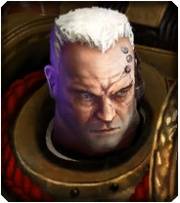
It’s a system that only works because Dawn of War uses a unique squad system where individual units are actually composed of up to nine soldiers who act in unison. Often I’m so caught up with zooming in and rotating the camera to watch the carnage that I forget to feed my units new orders. It’s terrifying because again and again it’ll impale Space Marines on its sword and hoist them upward so that gravity slowly pulls them further down onto the sword amid gouts of blood. When the Eldar summon the Avatar of Khaine in the seventh mission of the base campaign, much of the reason it’s so terrifying is not just because it takes half an army to kill. Every unit has bespoke ‘sync kills’ that trigger when they deal the killing blow against an enemy.

A lot of it is buoyed by the voice acting, though, which manages to somehow bring a bit of life to a group of super-soldiers who are only capable of feeling either righteous indignation or anger.ĭawn of War relishes in the violence. Like many of the novels, its plot twists are seen coming miles away, but I don’t care because I’m too enchanted by the stoicism of the Blood Ravens captain, Gabriel Angelos, and his too-wise-for-his- own-good Librarian Isador. That Dawn of War’s story manages to be this interesting decades later is a testament to how fun it is despite being so thoroughly incapable of nuance.

Once Chaos Marines and Eldar start getting involved, though, the whole operation goes sideways as ancient demonic artefacts whisper betrayal and an impending warpstorm-basically an evil space hurricane-threatens to trap everyone on a planet overrun by Orks and demons. (Image credit: Relic Entertainment) Rip and tearįirst released back in 2004, Dawn of War follows a chapter of Space Marines called the Blood Ravens as they work to delay an Ork ‘WAAAGH!’ (40k parlance for ‘unstoppable invasion’) while the last human inhabitants of Tartarus regroup and flee the planet.


 0 kommentar(er)
0 kommentar(er)
